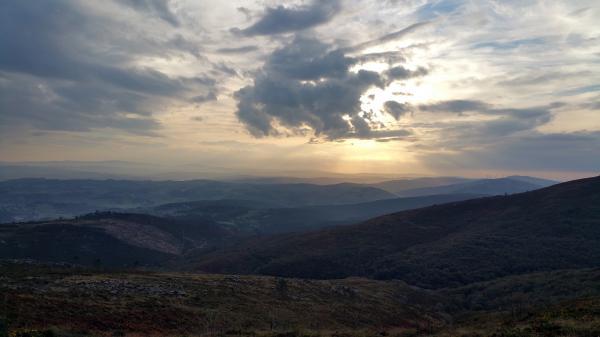This zone declared SAC (Special Area of Conservation) with 10.699 hectares, is shared with the municipalities of Beariz, Forcarei, O Irixo, Silleda and Lalín with part of “Vilatuxe's” parish and the totality of Zobra.
Montains of Candán forms landscapes with a special orography in which we can highlight peaks as “Coco” mount (969 m.), “Uceiro” (1004 m.) or “San Bieito”, which is the highest with 1015 meters of altitude. In Candan, rivers “Lerez” and “Umia” rises, in the western face, and numerous creeks spill its water in the high course of the river “Deza”, forming beautiful waterfalls. This river, with “Arnego” and “Ulla”, defines the idiosyncrasy of Deza region.
These characteristics promote the existence of species of flora and fauna with a great ecological value. Here, the major size forests of “Pontevedra” grow. They are formed by indigenous trees like oaks, hollies... Also, there are species of minor size as cranberry and rusco, as well as diverse endemic species. In the highest hillsides, vegetation is scrubland, heathers, shrubs, gorses...Also, It is necessary to highlight the existence of peatland zones where hight-value botanical plants grow, as the drosera or arnica. All this set offers a spectacular range of colours that change throughout the year.
Among fauna we can highlight emblematic species as the wolf, the brave cat or the royal owl, which there are only a few pairs in Galicia. In Candán montains, ornithologists will find a great range of birds, like kingfisher, water blackbird, passerine birds, golden oriole, night jar, crowned solitary eagle, European honey buzzard, small falcon, hen harrier, Eurasian scops owl...amongst many others. Also, numerous reptiles and amphibians are present in this mountain as Schreiber's green lizard, common salamander or Iberian painted frog.
The orography, made up of narrow and deep valleys where small rivers run through, crossed for small bridges (made of wood or stone) made the agriculture difficult. Because of this, different trades and activities were developed like to cultivate and to spin linen or to develop bee-keeping. An evidence of this age-old bee-keeping is that, in this area, there is one of the major beehives concentration area of Iberian Northwest and, nowadays, honey is one of its most recognized products.
Later, the exploitation of tin mines did that, in its day, the locality of “ A Trigueira” was the most prosperous of the municipality, being one of the first of having electrical light. Nowadays, constructions of that time are conserved and re-turned for tourist utilization.


